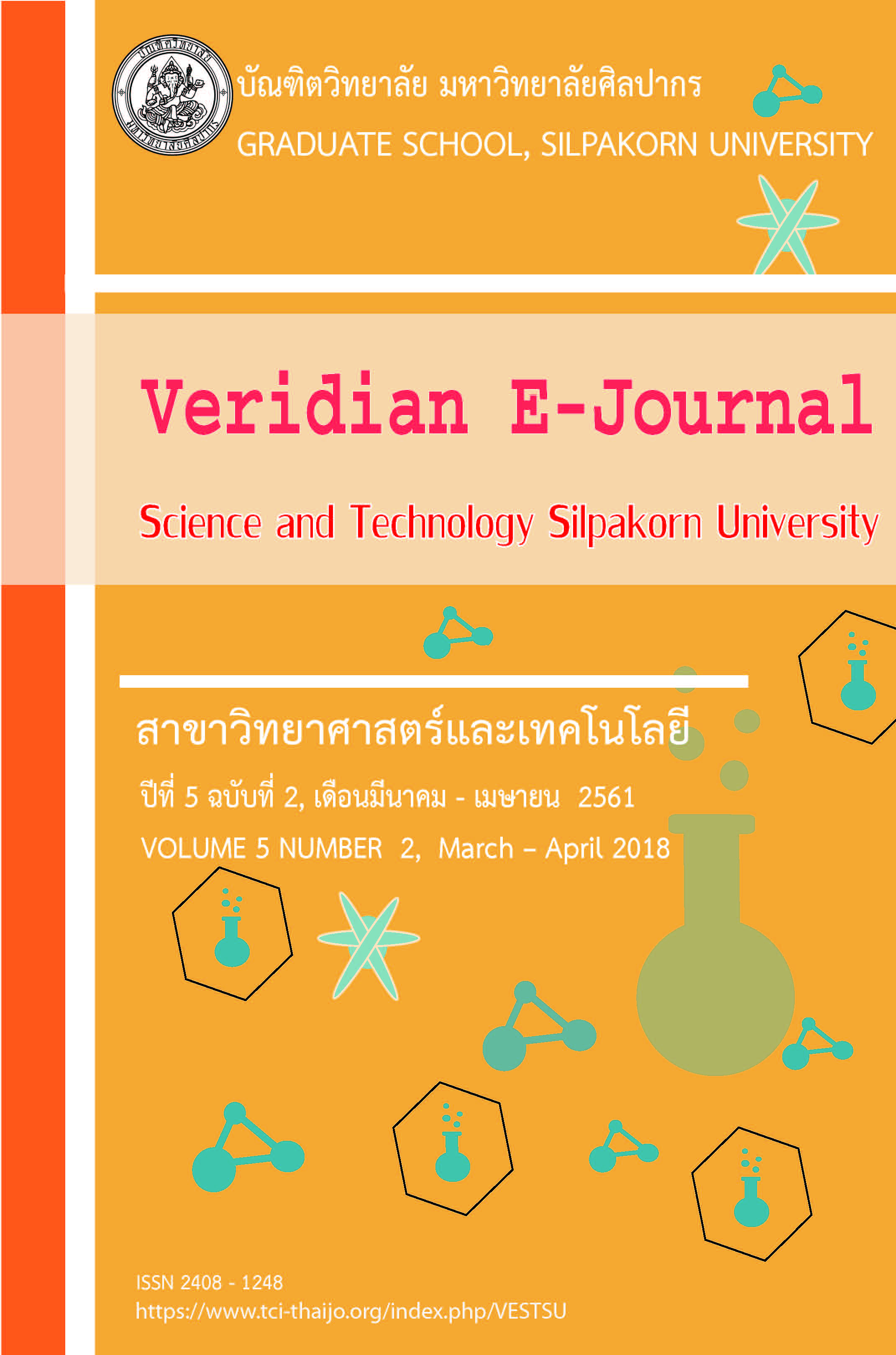ศักยภาพและการใช้ประโยชน์จากเปลือกกระจับ (Trapa natans L.) เพื่อการผลิตเอทานอล (The Potential and Utilization of Water Caltrops (Trapa natans L.) Peel for Ethanol Production)
Main Article Content
Abstract
เปลือกกระจับเป็นวัสดุประเภทลิกโนเซลลูโลส ประกอบด้วยเซลลูโลสร้อยละ 32.24, เฮมิเซลลูโลสร้อยละ 9.23 และลิกนินร้อยละ 10.25 ซึ่งถูกนำมาใช้ในการศึกษาศักยภาพและการใช้ประโยชน์ เพื่อการผลิตเอทานอลโดยทำการศึกษาการปรับสภาพที่เหมาะสม และศึกษาเปรียบเทียบกระบวนการผลิตเอทานอลด้วยการย่อยและหมักน้ำตาลแบบแยก (SHF) การย่อยและหมักน้ำตาลแบบพร้อมกัน (SSF) ผลการทดลองพบว่า สภาวะที่เหมาะสมในการปรับสภาพเปลือกกระจับคือ การปรับสภาพด้วยสารละลายโซเดียมไฮดรอกไซด์ที่ความเข้มข้นร้อยละ 30 (โดยน้ำหนัก) ที่อุณหภูมิ 100 องศาเซลเซียส เป็นเวลา 2 ชั่วโมง ให้ปริมาณเซลลูโลสสูงสุด คิดเป็นร้อยละ 61.05 ของน้ำหนักแห้ง แตกต่างกันทางสถิติอย่างมีนัยสำคัญ (P<0.05) ซึ่งสอดคล้องกับผลการวิเคราะห์ลักษณะทางสัณฐานวิทยาด้วยกล้องจุลทรรศน์อิเล็กตรอนแบบส่องกราด (SEM) และผลการวิเคราะห์โครงสร้างทางเคมีและพันธะเคมีในโมเลกุลด้วยเครื่อง Fourier Transform Infrared Spectroscopy (FT-IR) พบว่า มีการเปลี่ยนแปลงโครงสร้างทางกายภาพและทางเคมีของเปลือกกระจับ สำหรับผลการผลิตเอทานอล พบว่า วิธี SSF ให้ผลผลิตเอทานอลใกล้เคียงกับวิธี SHF โดยผลผลิตคิดเป็น 1.94 และ 1.90 กรัมต่อลิตร ตามลำดับจากผลการวิจัยนี้กล่าวได้ว่า เปลือกกระจับเป็นอีกหนึ่งวัสดุเหลือทิ้งที่มีศักยภาพในการผลิตเอทานอล และสามารถนำมาประยุกต์ให้เป็นแหล่งพลังงานทางเลือกได้ต่อไปในอนาคต
Water caltrops peel, lignocellulosic material containing 32.24% of cellulose, 9.23 %, hemicellulose and 10.25 % of lignin, was used for study on of the potential and utilization of water caltrops (Trapa natans L.) peel for ethanol production. The optimum pretreatment conditions of water caltrops and the comparative study of ethanol production process by separate hydrolysis and fermentation (SHF) and simultaneous saccharification fermentation (SSF) were investigated. The result showed that the optimum condition was pretreatment with 30 % sodium hydroxide solution at 100 °C for 2 hours, which gave the maximum cellulose content of 61.05 % with statistically significant (P<0.05). Furthermore, the results from Scanning Electron Microscopy (SEM) and Fourier Transform Infrared Spectroscopy (FT-IR) exhibited that the physical and chemical structures of water caltrops have been changed. For ethanol production, the ethanol content obtained from SSF was 1.94 g/L which was similar to SHF. According to these results, water caltrops peel is one of the potential materials for ethanol production and it can be applied as alternative energy in the future.

